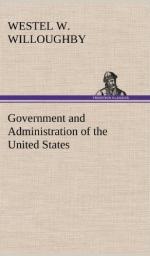The right of secession follows as a logical outcome of the theory of nullification rigidly carried out. Federal laws are general in their nature, and if binding anywhere, must be binding everywhere. If then, a minority of States insist on their right of nullification, the federal government will be obliged either to admit that every act of Congress is without any force in a State until it has obtained the tacit approval of the people of that State, or else it will be driven to the necessity of obtaining the enforcement of the law by arms. Such employment of force would of course be but the prelude to secession. Indeed, South Carolina, in her Ordinance of Nullification, declared that she would secede, if the United States did not repeal the obnoxious laws, or if she should attempt to enforce the collections of the tariff duties provided for by the acts in dispute. According to the Unionist view, it is held that in no case has the individual State the right to resist the operation of a federal law, much less does it possess the actual power to pass a law affecting its relation to, or continuance in, the Union. This view is supported by an interpretation of the constitution that denies to that instrument the character of a compact between the States and the National Government. The constitutional theory of this school is that the National Government was formed by the people as a whole, and not by the States. That the States accepted this government, but were in no sense parties to an agreement between them and the Nation. According to this view, the Union began with the first acts of resistance taken in common by the colonies, and is thus, in a sense, older than the state governments, which were not formed until after the Declaration of Independence. Also, that when the States gave in 1788 their consent to the constitution, their consent was irrevocable. Two quotations from decisions rendered by the Supreme Court of the United States will make clear the arguments and theory of the Unionists.
Said Chief Justice Marshall:[1] “The convention which promulgated the constitution was indeed elected by the state legislatures, but the instrument when it came from their hands, was a mere proposal, without obligations or pretentious to it. It was reported to the then existing Congress of the United States, with a request that it might ’be submitted to a convention of delegates chosen in each State by the people thereof, under recommendation of its legislature for their assent and ratification.’ This mode of proceeding was adopted, and by the conventions, by Congress, and by the state legislatures, the instrument was submitted to the people. They acted upon it in the only way in which they can act safely, effectually, and wisely on such a subject, by assenting in convention. It is true they assembled in their several States, an where could they have assembled? From these conventions the constitution derives its whole authority.




